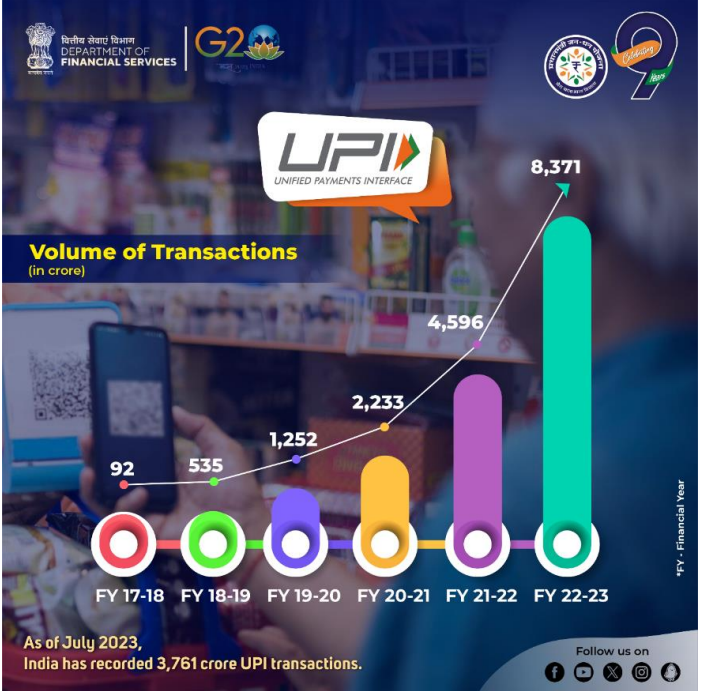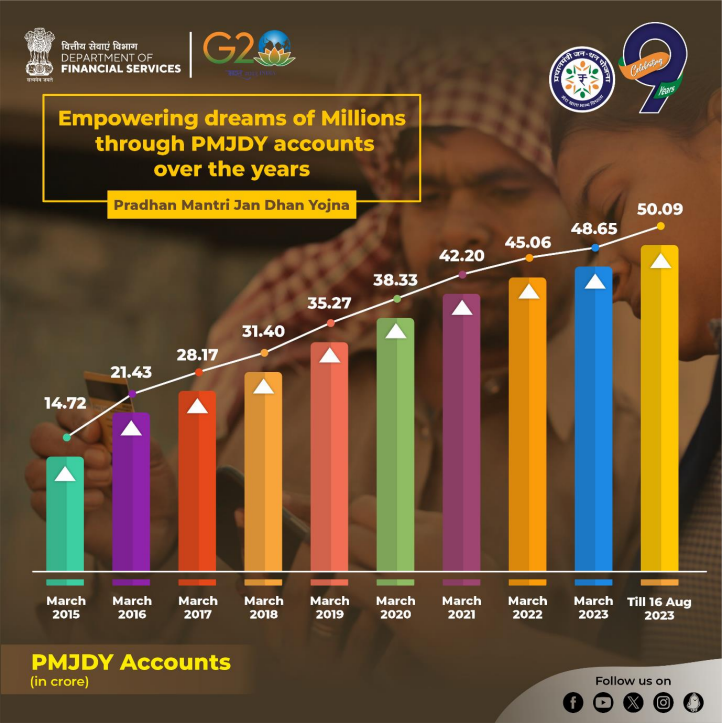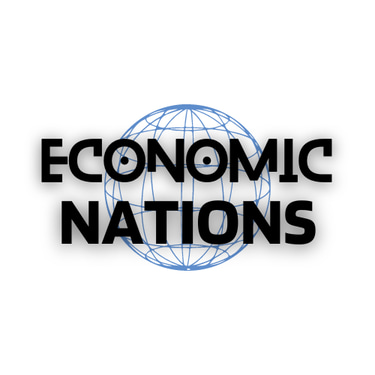Empowering the Less Privileged: The Confluence of DPI and PMJDY in Shaping a New Economic Vision
In the dynamic intersection of technology and socio-economic initiatives, the confluence of Digital Public Infrastructure (DPI) and the Pradhan Mantri Jan-Dhan Yojana (PMJDY) in India emerges as a powerful force reshaping the economic landscape. As the less privileged become key players in this transformative journey, DPI and PMJDY synergize to bridge gaps, fostering financial inclusion, education, and entrepreneurship on an unprecedented scale. This article explores how these two forces converge, creating pathways for the marginalized to actively shape a new and more equitable economic vision.
Bureau of Society and Transformation
11/23/20233 min read


In the ever-evolving landscape of global economics, the less privileged and those with limited cash holdings are emerging as unexpected catalysts for a new economic vision. This shift is not just technological; it is also driven by transformative government initiatives such as the Pradhan Mantri Jan-Dhan Yojana (PMJDY) in India, complemented by the rise of Digital Public Infrastructure (DPI). Together, these forces are reshaping the way individuals access financial resources, education, and opportunities.
Digital Public Infrastructure (DPI): A Transformative Force
Digital Public Infrastructure (DPI) is more than a technological advancement; it is a powerful enabler of inclusivity. DPI encompasses the digital frameworks and platforms that connect individuals to essential services, breaking down traditional barriers. In this era of connectivity, DPI becomes the bridge that spans the gap between the privileged and the less privileged, providing a level playing field.
The global economic paradigm is witnessing a profound shift as DPI facilitates financial inclusion, education, and entrepreneurship. With digital platforms becoming the backbone of economic activities, the less privileged are now active participants in shaping this new economic landscape.




Pradhan Mantri Jan-Dhan Yojana (PMJDY): A Beacon of Financial Inclusion
Initiated by the Government of India, PMJDY has been a cornerstone in the pursuit of financial inclusion. Launched in August 2014, it aimed to provide universal banking services to every unbanked household. Over the years, PMJDY has surpassed expectations, with over 50 crore Jan Dhan accounts opened as of August 2023. This monumental achievement has brought more than half of these account holders into the formal banking system, with a significant proportion being women and residents of rural and semi-urban areas.
PMJDY is not just about opening bank accounts; it is a comprehensive initiative that addresses the multifaceted needs of the less privileged. From basic savings bank accounts with overdraft facilities to financial literacy programs and the issuance of RuPay cards, PMJDY has transformed into a catalyst for economic empowerment.
DPI and PMJDY: A Symbiotic Relationship
The confluence of DPI and PMJDY signifies a harmonious synergy between technological infrastructure and targeted government interventions. DPI, by providing the digital backbone, facilitates the seamless implementation of PMJDY, ensuring that the benefits reach the farthest corners of society.
DPI plays a crucial role in bridging the digital divide, enabling the less privileged to access financial services, education, and entrepreneurial opportunities seamlessly. Mobile banking, digital payment systems, and online learning platforms, all made possible by DPI, are instrumental in bringing the unbanked and underbanked populations into the mainstream.
Data and Achievements: PMJDY's Impact
As of August 2023, PMJDY has not only opened 50.09 crore Jan Dhan accounts but has also facilitated a total deposit balance exceeding Rs. 2.03 lakh crore. The scheme's emphasis on financial literacy, overdraft facilities, and micro-insurance has transformed these accounts into instruments of economic stability and growth.
The issuance of over 33.98 crore RuPay cards has augmented the digital leap facilitated by DPI, turning these accounts into gateways for digital transactions. The success of PMJDY during the COVID-19 pandemic, where over 20 crore women PMJDY account holders received timely financial assistance, underscores the resilience of the initiative.
The Path Forward: Inclusive Digital Transformation
As we navigate this transformative landscape, it is imperative to recognize the symbiotic relationship between DPI and targeted government initiatives like PMJDY. Governments, international organizations, and tech companies must collaborate to further bridge the digital divide and ensure that the less privileged are active participants in the ongoing digital revolution.
The path forward involves a continued focus on inclusive policies, digital literacy training, and infrastructure development. PMJDY's success story becomes a testament to the fact that leveraging digital public infrastructure for targeted financial inclusion initiatives can create a more equitable and sustainable economic future for all.
In conclusion, the confluence of DPI and PMJDY is not just a collaboration of technologies; it is the convergence of vision and action. Together, they herald a new economic era where the less privileged are not just recipients of change but active contributors to a more inclusive and empowered global economy.
(With AI Input)
Context:
The Chief Minister of West Bengal in India has expressed skepticism about the widespread adoption of digital payment methods, stating that despite the current emphasis on digitization, debit cards, and credit cards, only a limited number of big businessmen utilize these tools. The Chief Minister questions the inclusivity of a cashless economy, particularly in generating employment for common people and small-scale industries. This perspective stands in contrast to the proactive approach of the Central Indian government, which has been fervently advocating for the expansion of the digital economy.
Contacts
enquiry@economicnations.org
(xx) 98-11-937-xxx (On verification)
